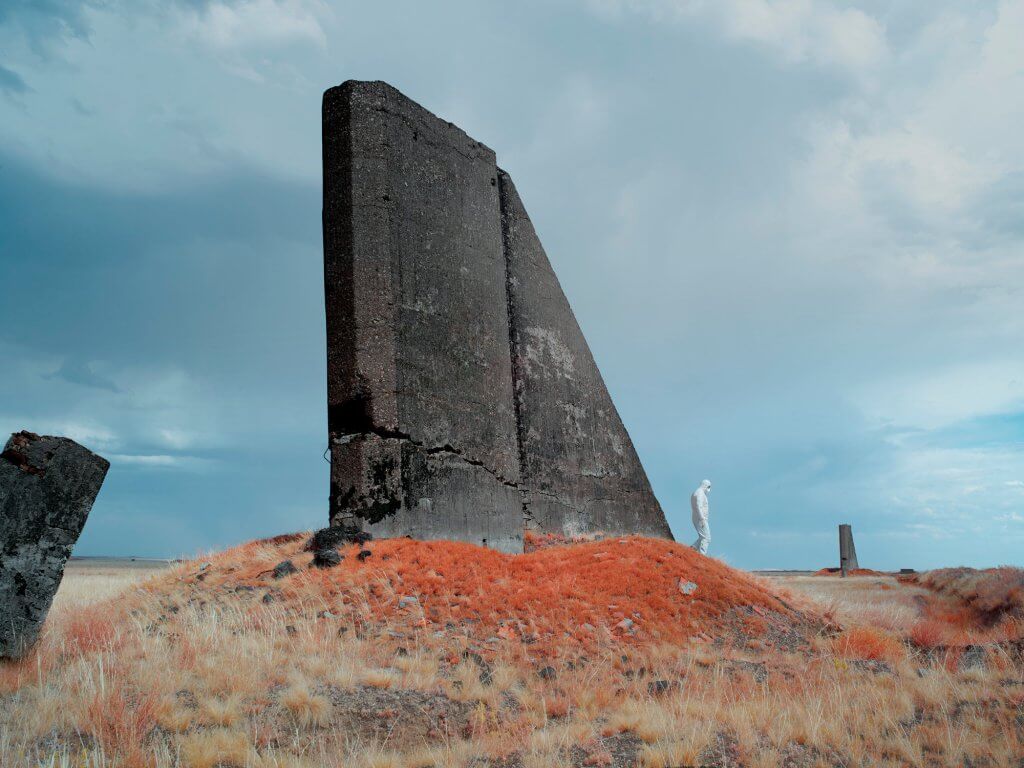This autumn/winter Huis Marseille, Museum of Photography will be showing photographer Eddo Hartmann’s latest multimedia project, The Sacrifice Zone. It marks the fourth time that Huis Marseille is to show Hartmann’s work. In 2013 his impressive series Here lives my home was part of the exhibition The rediscovery of the world. This was followed in 2015 and 2017/18 by the two parts of his project Setting The Stage | North Korea, about daily life in the North Korean capital Pyongyang. The 2017/18 exhibition was one of the best-attended exhibitions in the history of the museum.
For his latest project Eddo Hartmann visited the inhospitable steppe of Kazakhstan. Until a few years ago this country was a blind spot on the world map for the general public. Recently this has changed with the disastrous war in Ukraine and the redevelopment of the famed Silk Road between China and Western Russia, which have raised tensions in the region.
Open-air laboratory
Kazakhstan is by far the largest country in Central Asia, and until 1991 it was an important republic within the Soviet Union. During the Cold War, in utmost secrecy and well out of sight of the rest of the world, parts of this steppe were turned into an immense open-air laboratory. For decades, and with no consideration for the local population, the area formed an ill-fated decor for the most destructive nuclear tests ever held on the surface of the earth. The recent show of force by Russia’s current rulers has given this historic episode an unexpected and painful contemporary relevance.
Armed with a tripod, a medium-format camera, and an essential Geiger counter, Eddo Hartmann visited the affected area, which now bears the illustrious name ‘The Polygon’, in different seasons. Over the years he documented both the tormented landscape and the people who live there. He portrayed those who had directly witnessed this history but also the generations that followed, who have found different ways of dealing with the past.
Life on the vast steppe has traditionally been exceedingly difficult. The region has an extreme climate, with scorching summers and ice-cold winters. Severe weather events, such as dust storms and snow storms, test the resilience of people and animals alike. In the last twenty years modernisation and urbanisation have brought change to the Kazakh steppe. Many Kazakhs, originally nomads, have adopted a more sedentary lifestyle, settling in towns and villages. Some communities nevertheless maintain traditional practices and retain a deep-rooted connection to the steppe and to the nomadic heritage that defines them. In many cases the ecological destruction of their habitat that was wreaked under Soviet rule meant an all but irreparable violation of their identity that can still be felt daily.
Red landscape
The portraits, landscapes and films that Hartmann made for this project often have a surrealistic mood and sometimes evoke a sensory experience in the viewer. The texture of brick, crumbling asphalt, broken earth, flaking paint, barbed wire, scorched grass, and water in strange craters invites us to not only to observe in detail, but also to feel.
The experience of the unrelenting steppe is emphasised in almost every image by its vast and seemingly endless emptiness. One of the highlights of the exhibition is the work that Hartmann made in the epicentre of the nuclear test zone. The area is difficult to reach and can only be entered wearing protective clothing, which naturally presented additional challenges while photographing. In the most contaminated places Hartmann used an infrared camera, which makes it possible to literally show the world in a different light. In this part of the spectrum the green steppe appears an intense red colour, making it clear that there is a lot more here than one sees with the naked eye.
Photographic evidence
Documenting events that happened decades ago is an inherently difficult task, as the distance in time carries the risk of misrepresentation. At the same time this distance provides more space for reflection, which can be crucial for such documentation. Choosing the right idiom in which to show past events without descending into cliché or excessive aestheticisation becomes as important as finding the traces of the catastrophe itself. Photographs made in the present underline the impossibility of fully perceiving ‘reality’, but can sometimes still offer more clarity than the photographs taken during the event itself. Here, this coincides with the fact that the actual consequences of large-scale radioactive contamination only surface after many years.
With The Sacrifice Zone Hartmann focuses his lens specifically on the hidden history of a country. The notion of photography as testimony has existed almost since the invention of photography itself. A photographic image can not only freeze an event in time, confronting us many years later with the depiction of an historical event, but it can also reveal traces of the past that would otherwise remain invisible. It is this capacity to reveal the unseen, even long after the actual events have taken place, that currently holds an important place in Hartmann’s oeuvre.
Eddo Hartmann (The Hague, 1973) photographer and teacher, studied Photographic Design at the Royal Academy of Art in The Hague. His career now spans more than 25 years. He is best known for his striking and thought-provoking images of architecture and urban spaces. He started working as an editorial and commissioned photographer, but later switched to long-term documentary projects. Hartmann’s photography has been acclaimed and exhibited internationally. His work has been acquired for several collections, including those of Huis Marseille, the Dutch Ministry of Foreign Affairs, the AMC in Amsterdam, and the Kunstmuseum in The Hague.
This project was made possible by the generous support of two foundations, Stichting Oog Op De Natuur and Stichting Stokroos.
Book
The exhibition will be accompanied by the publication The Sacrifice Zone, published by Hannibal Books, 144 pages, 27×35 cm, hardcover, English. The publication is available in the museum shop.






